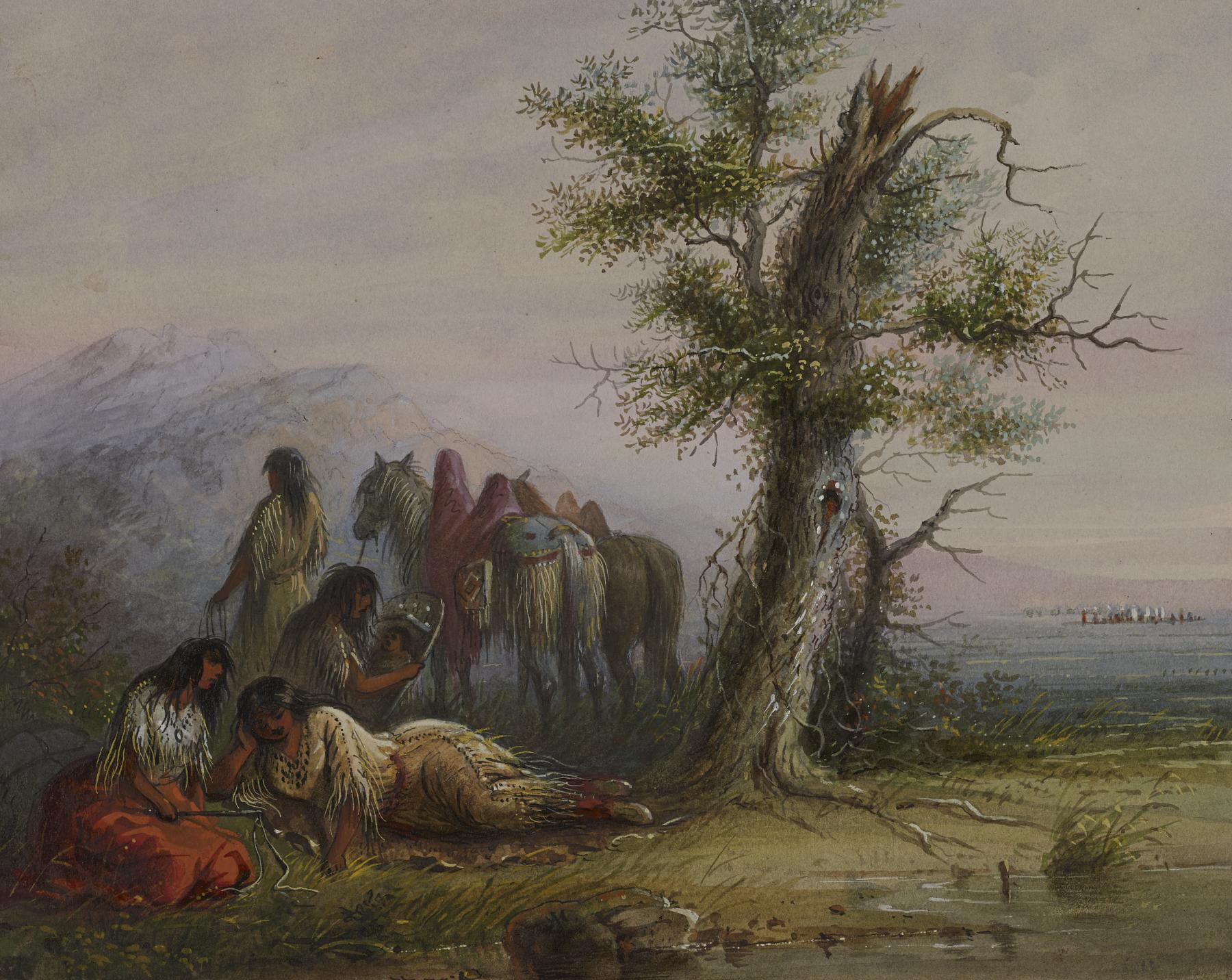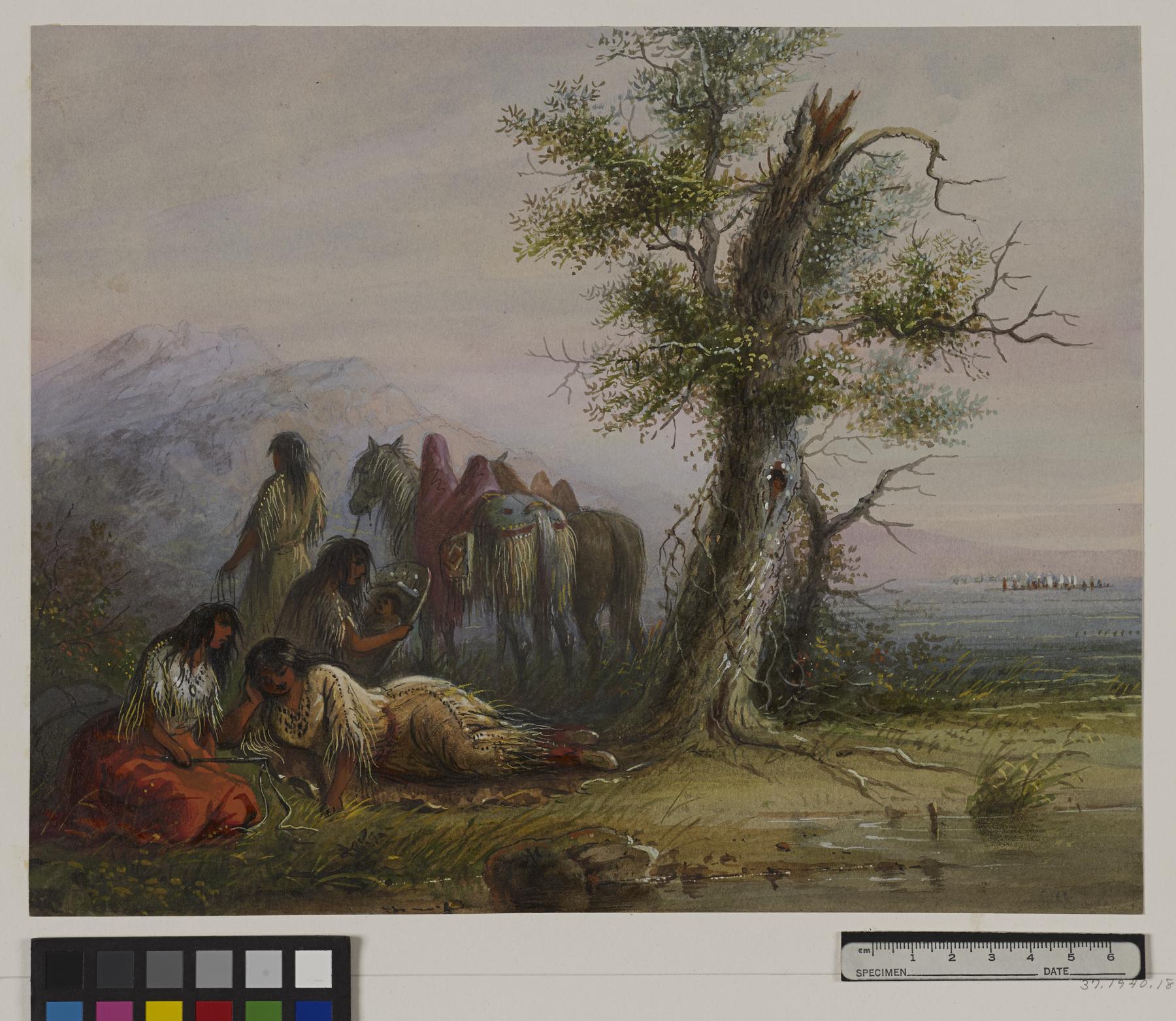Indian Women
(18th and 19th Centuries )
Extracts from Alfred Jacob Miller’s original text, which accompanied his images of Native Americans, are included below for reference. These words, which shaped how Miller’s contemporaries viewed the watercolors, reveal the racism and sexism embedded in 19th-century exploration and colonization of the western part of what is today the United States.
"The foreground of the sketch presents some Indian women in repose;- they have dismounted from their horses near a stream, where the Caravan will halt for a 'nooning.' Much cannot be said in favor of the manner in which the female part of the community are treated by the Indians,- they are mere 'hewers of wood and drawers fo water.' - the North American savage entertaining, we fear, a kindred opinion with the Turks, id est - that they have no souls. When the grande Seigneur arrives,- they set up his lodge, spread his robes, unladen the horses & mules, make his fire, and prepare his meat. On might suppose that this would entitle them to some little acknowledgment,- but if they receive a grunt of acquiescence it is more than is always accorded. This trait does not solely belong to our Indians,- it may be observed in all barbarous countries, and civilzation here presents a glorious and shining contrast. Indeed the rise and progress of the latter may be graduated by the estimation in which women are held, and her appreciation as a companion and faithful friend of man, even when all others discard him." A.J. Miller, extracted from "The West of Alfred Jacob Miller" (1837).
In July 1858 William T. Walters commissioned 200 watercolors at twelve dollars apiece from Baltimore born artist Alfred Jacob Miller. These paintings were each accompanied by a descriptive text, and were delivered in installments over the next twenty-one months and ultimately were bound in three albums. Transcriptions of field-sketches drawn during the 1837 expedition that Miller had undertaken to the annual fur-trader's rendezvous in the Green River Valley (in what is now western Wyoming), these watercolors are a unique record of the closing years of the western fur trade.
Provenance
Provenance (from the French provenir, 'to come from/forth') is the chronology of the ownership, custody, or location of a historical object. Learn more about provenance at the Walters.
William T. Walters, Baltimore, 1858-1860, by commission; Henry Walters, Baltimore, 1894, by inheritance; Walters Art Museum, 1931, by bequest.
Geographies
USA (Place of Origin)
Measurements
H: 9 1/16 x W: 11 1/4 in. (23 x 28.6 cm)
Credit Line
Commissioned by William T. Walters, 1858-1860
Location in Museum
Not on view
Accession Number
In libraries, galleries, museums, and archives, an accession number is a unique identifier assigned to each object in the collection.
In libraries, galleries, museums, and archives, an accession number is a unique identifier assigned to each object in the collection.
37.1940.188







